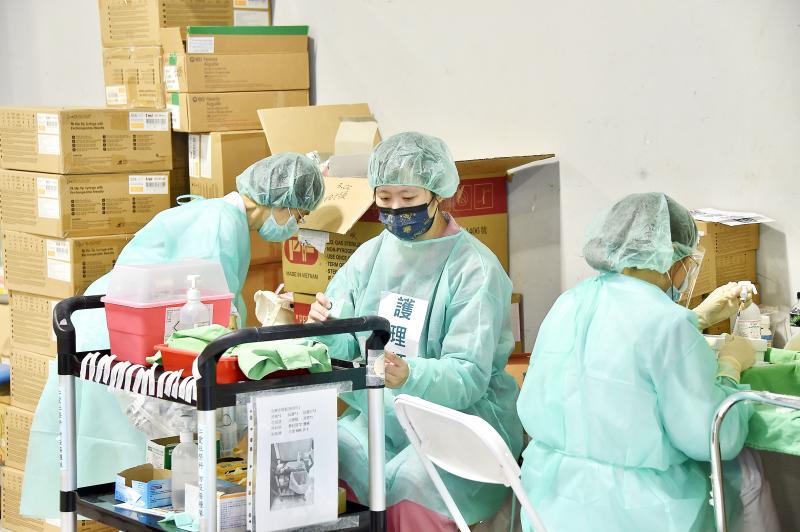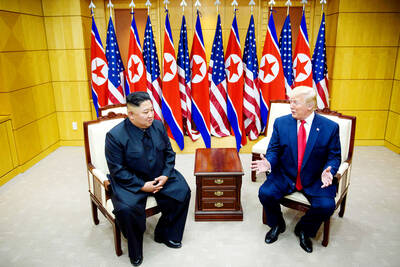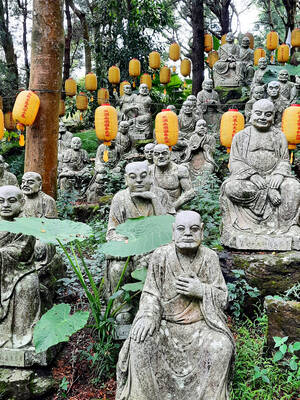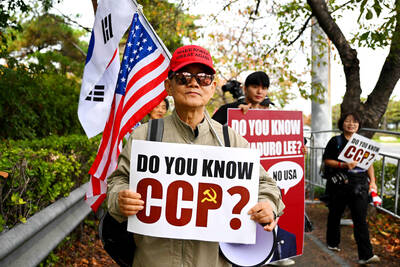A couple of years ago a friend got in touch with me. Her son, a nurse at a local hospital, needed a place to stay.
His hospital was technically in violation of the government regulations, which strictly apportion hospital beds based on an area’s population. Its operator, politically well-connected, simply ignored those rules and built the hospital, giving the area unneeded capacity. The twelfth-floor patient wards, superfluous, were used as makeshift dorms for the nurses.
NURSES: EXPLOITED SERFS

Photo: Tu Chien-jung, Taipei Times
Because the nurses were on-site even on their alleged days off or during sleeping hours, the hospital, perpetually short of staff, would ruthlessly yank the nurses out of bed to perform shifts. His mother said he was looking for a room in a place some distance from the hospital so he would no longer be effectively on call 24-7, working strings of days over 16 hours.
Foreigners often praise the cheap, plentiful medical care here, along with the National Health Insurance system, the latter one of the world’s best. Whenever something is cheap relative to income, like seafood or cellphones or vegetables or Uber, somewhere in the production chain there is a population of disposable, exploited serfs. In Taiwan’s hospitals, that is the nursing staff.
It is true that Taiwan’s hospital system is not for-profit. Instead, it is for-revenue. In that system, doctors prescribe drugs and treatments, and carry out surgeries and other interventions, and recommend expensive treatments, all of which generate revenues for the hospital. Nurses? Nurses are costs.
The factory model in Taiwan under which employees are viewed as costs is applied to all enterprises. Hospitals are no exception. Indeed, many of them are run by titans of industry who use them as revenue farms, harvesting the fruits of government subsidies.
The hospital system thus runs on the time-honored Taiwan gender principle under which exploited female workers at the bottom generate profits for the patriarch at the top.
As with factories in Taiwan, at many hospitals overtime laws are simply ignored and nurses are required to punch out and then continue working. This is so routinized that in one dramatic case that reached my ears a few years ago, a nurse miscarried at work and was required by the hospital to complete her shift before she could get a D&C.
“Most of them cannot take leave even when they are sick,” notes the study “The Relationship among Emotional Intelligence, Social Support, Job Involvement, and Turnover Intention — A Study of Nurses in Taiwan” (hereafter: “Nurses in Taiwan”) on why people quit being nurses. Promotion is slow.
According to “Psychological Work Environment and Suicidal Ideation Among Nurses in Taiwan,” the “poor psychological environment at work” of Taiwan’s nurses, resulted in one in seven nurses in the study having had suicidal thoughts.
NURSE SHORTAGES
The result is that though Taiwan graduates more nurses than it needs, and employed 185,000 of them last year, it remains at least 9,000 short even by its own stingy standards. One of the defining experiences of my work teaching at universities with nursing programs was my nursing students approaching me to pick my brains about what they should do now that they have decided not to be nurse.
The ongoing shortage means that, while the Ministry of Health and Welfare would like the number to be one nurse for every seven patients, the actual ratio is one to 12. The National Federation of Nurses Association pointed out in 2018 that from December 2013 to February 2018, 89.76 percent of local hospitals had difficulty recruiting nurses and the average vacancy rate was 5.57 percent. Most researchers give similar numbers, and almost all describe the shortage as “growing.”
HIGH TURNOVER
One aspect of the nursing shortage is the high turnover. Though numbers vary, in any given year probably 15-20 percent of nurses leave, with much higher numbers in the first few months. The turnover has all sorts of pernicious effects for patient care and nursing performance. As the “Nurses in Taiwan” paper observed about nursing turnover, just under 60 percent of nurses have a nursing certificate, while in Canada and the US the numbers are 93 percent and 83 percent, respectively.
The high nurse turnover helps hold costs down, since hospitals do not have to hand out as many raises and promotions. Hence, hospitals may make noises about it, but they take no concrete action.
The lack of nurses is subsidized by the Taiwanese themselves. When a person enters the hospital, family members are expected to stay with them to provide care, or to hire people to stand in for them. There are people who hang out by hospitals to fill that role. The system implicitly assumes that there are surplus family members who have time for that, but of course those days are long gone.
This means that family members must live through horrors they are neither emotionally nor professionally equipped for. My ex-wife, for example, had to care for her dying father in the hospital during his final weeks, when he had Alzheimer’s with dementia, and, not recognizing her, berated her for putting him in a concentration camp.
The government has attempted various measures to get nursing employers to change the conditions of the job, none of which have worked. From 2009 to 2014 it allocated billions to hospitals for that purpose. In 2014, the Taipei Times reported, nearly 500 medical institutions received funding, with only 49 percent hiring more nurses or increasing incentives and overtime pay. Fourteen percent did nothing, while 34 percent reduced their nursing staff.
Thus, the “nursing shortage” is one with all other labor issues in Taiwan, where workers constantly face petty, abusive bosses. As a post on one of the medical industry Facebook pages observed, Taiwan does not have a nursing shortage, what it has is a shortage of good working environments.
Pieces like this one generally recommend government action, but handing down money and setting new rules has had little effect. Worse, at present nursing unions and associations remain weak and ineffective, like almost all labor unions in Taiwan.
As the Taipei Times noted in a report two years ago, there are three unions, further dividing nurses. The one move the government could make that would have a powerful effect is to merge the nursing unions and require nurses to join the union, and then support nurses in strikes and other labor actions. Change would then occur quite rapidly, which might also open the door for labor action in other industries.
But whatever happens, the next time you’re in a hospital, be kind to the nurse. She’s undoubtedly had a hard day.
Notes from Central Taiwan is a column written by long-term resident Michael Turton, who provides incisive commentary informed by three decades of living in and writing about his adoptive country. The views expressed here are his own.

US President Donald Trump may have hoped for an impromptu talk with his old friend Kim Jong-un during a recent trip to Asia, but analysts say the increasingly emboldened North Korean despot had few good reasons to join the photo-op. Trump sent repeated overtures to Kim during his barnstorming tour of Asia, saying he was “100 percent” open to a meeting and even bucking decades of US policy by conceding that North Korea was “sort of a nuclear power.” But Pyongyang kept mum on the invitation, instead firing off missiles and sending its foreign minister to Russia and Belarus, with whom it

Many people noticed the flood of pro-China propaganda across a number of venues in recent weeks that looks like a coordinated assault on US Taiwan policy. It does look like an effort intended to influence the US before the meeting between US President Donald Trump and Chinese dictator Xi Jinping (習近平) over the weekend. Jennifer Kavanagh’s piece in the New York Times in September appears to be the opening strike of the current campaign. She followed up last week in the Lowy Interpreter, blaming the US for causing the PRC to escalate in the Philippines and Taiwan, saying that as

When Taiwan was battered by storms this summer, the only crumb of comfort I could take was knowing that some advice I’d drafted several weeks earlier had been correct. Regarding the Southern Cross-Island Highway (南橫公路), a spectacular high-elevation route connecting Taiwan’s southwest with the country’s southeast, I’d written: “The precarious existence of this road cannot be overstated; those hoping to drive or ride all the way across should have a backup plan.” As this article was going to press, the middle section of the highway, between Meishankou (梅山口) in Kaohsiung and Siangyang (向陽) in Taitung County, was still closed to outsiders

The Chinese Communist Party (CCP) has a dystopian, radical and dangerous conception of itself. Few are aware of this very fundamental difference between how they view power and how the rest of the world does. Even those of us who have lived in China sometimes fall back into the trap of viewing it through the lens of the power relationships common throughout the rest of the world, instead of understanding the CCP as it conceives of itself. Broadly speaking, the concepts of the people, race, culture, civilization, nation, government and religion are separate, though often overlapping and intertwined. A government